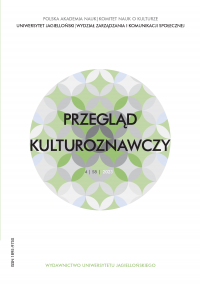OF FAIRIES AND “DOCILE DAUGHTERS”: UBISOFT MONTREAL’S CHILD OF LIGHT
AS AN ADAPTATION OF GABRIELLE-SUZANNE DE VILLENEUVE’S BEAUTY AND THE BEAST
OF FAIRIES AND “DOCILE DAUGHTERS”: UBISOFT MONTREAL’S CHILD OF LIGHT
AS AN ADAPTATION OF GABRIELLE-SUZANNE DE VILLENEUVE’S BEAUTY AND THE BEAST
Author(s): Agnieszka Kliś-BrodowskaSubject(s): Visual Arts, Sociology of Art
Published by: Wydawnictwo Uniwersytetu Jagiellońskiego
Keywords: Child of Light; video-game adaptation; fairy-tale adaptation; Beauty and the Beast; Gabrielle-Suzanne de Villeneuve;
Summary/Abstract: The following article analyzes Ubisoft Montreal’s art game Child of Light (2014) as an adaptation of the eighteenth-century fairy tale Beauty and the Beast (1740) by Gabrielle-Suzanne de Villeneuve, the less famous original of Jeanne-Marie Leprince de Beaumont’s Beauty and the Beast (1756). While Villeneuve drew from the late seventeenth-century French salon fairy-tale tradition, her novel-length tale represented an ideological turning point, ultimately subordinating women’s independence and freedom to act in the public sphere, propagated by older upper-class sa- lonnières in their fairy tales, to the bliss of love and family, typical of the bourgeois private sphere.2 As the designers announced prior to the release that the game was meant to concentrate on growing up to adulthood, self-sufficiency, and independence, instead of marriage (it thus does not feature the character of the Beast/Prince),3 it could be assumed that Child of Light should enter into an intertextual dialogue with Villeneuve’s text by interpreting and transforming its women characters, concentrating on women empowerment and the ability to act in the public sphere/outdoors. I focus on the game’s transposition of Villeneuve’s caste of powerful, independent fairies and, somewhat surprisingly, of the self-sacrificing heroine, or a “docile” daughter,4 trained to abdicate her desire. Aurora, the player character, may not sacrifice herself for the sake of the man, but still must sac- rifice her longing for a family to become an egalitarian ruler devoted to public service, which, in the end, appears to peculiarly disempower her. Thus, Child of Light may be seen to nonetheless reiterate conservative values rather than propose a tale of women empowerment.
Journal: Przegląd Kulturoznawczy
- Issue Year: 58/2023
- Issue No: 4
- Page Range: 579-598
- Page Count: 20
- Language: Polish

